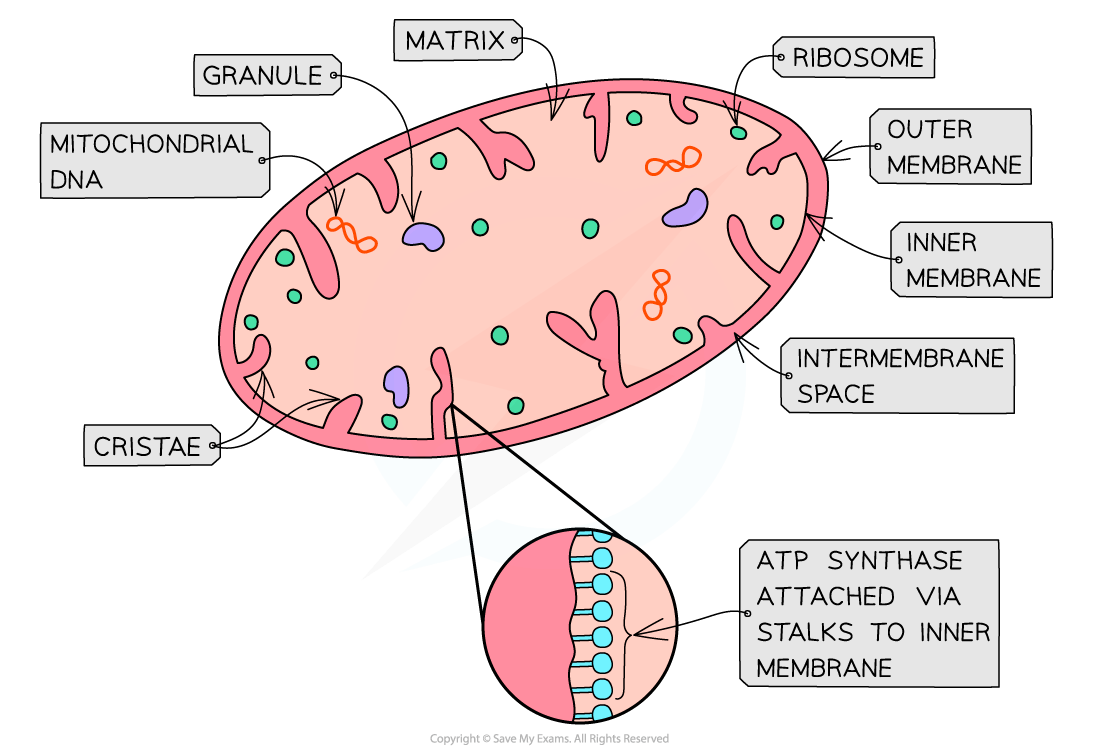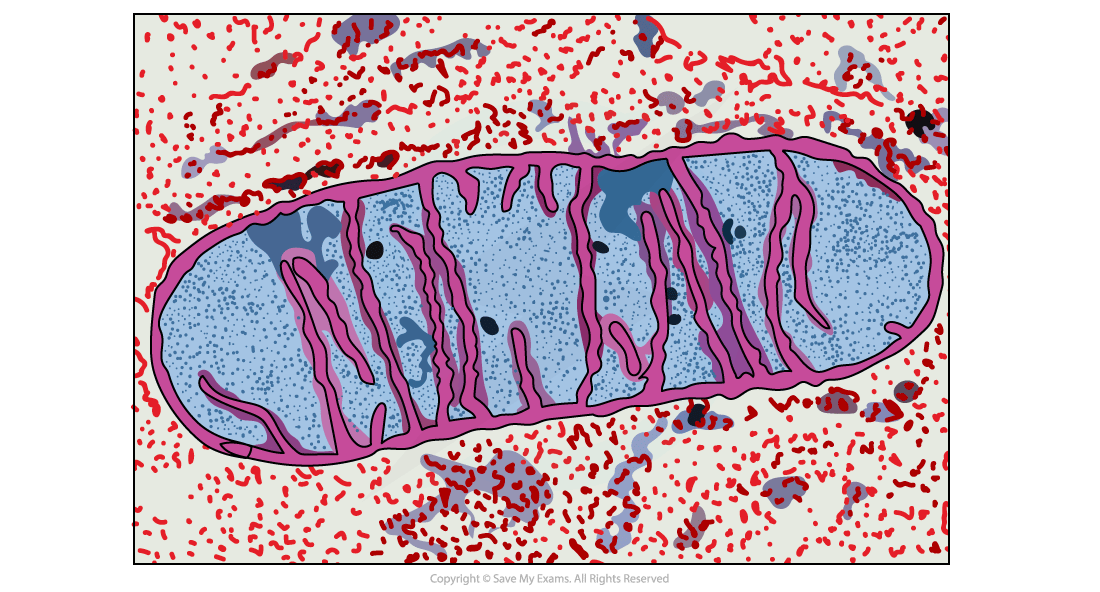Structure & Function of Mitochondria (Cambridge (CIE) A Level Biology): Revision Note
Exam code: 9700
Structure & function of the mitochondria
Mitochondria are rod-shaped organelles 0.5 - 1.0 µm in diameter
They are the site of aerobic respiration in eukaryotic cells
The function of mitochondria is to synthesise ATP
Synthesis of ATP in the mitochondria occurs during the last stage of respiration called oxidative phosphorylation
This relies on membrane proteins that make up the ‘electron transport chain’ and the ATP synthase enzyme—the details of this are covered later in the notes

Structure
Mitochondria have two phospholipid membranes, an outer and an inner membrane
The outer membrane is:
Smooth
Permeable to several small molecules
The inner membrane is:
Folded (cristae)
Less permeable
The site of the electron transport chain (used in oxidative phosphorylation)
Location of ATP synthase (used in oxidative phosphorylation)
The intermembrane space:
Has a low pH due to the high concentration of protons
The concentration gradient across the inner membrane is formed during oxidative phosphorylation and is essential for ATP synthesis
The matrix:
Is an aqueous solution within the inner membranes of the mitochondrion
Contains ribosomes, enzymes and circular mitochondrial DNA necessary for mitochondria to function

Relationship between structure and function
The structure of mitochondria makes them well-adapted to their function
They have a large surface area due to the presence of cristae (inner folds) which enables the membrane to hold many electron transport chain proteins and ATP synthase enzymes
More active cell types can have larger mitochondria with longer and more tightly-packed cristae to enable the synthesis of more ATP because they have a larger surface area
The number of mitochondria in each cell can vary depending on cell activity
Muscle cells are more active and have more mitochondria per cell than fat cells due to the differing levels of metabolic activity in those cell types
And the resulting different levels of demand for ATP in those cells
Examiner Tips and Tricks
Exam questions can sometimes ask you to explain how the structure of a mitochondrion helps it carry out its function effectively. It is not enough to say that cristae increase the surface area of the inner membrane. You need to explain that an increased surface area of the inner membrane means there are more electron transport chain carriers and ATP synthase enzymes which results in more ATP being produced.
Be prepared to identify the different structures and locations in a mitochondrion from an electron micrograph.

Unlock more, it's free!
Did this page help you?